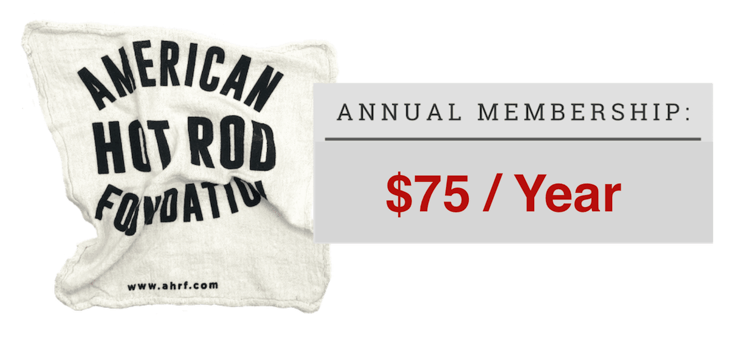Kent Fuller built his first dragster in 1956 in a classic pairing with his brother-in-law who had an engine. Brother-in-law also had a change of plans and bailed out of the project before the chassis was finished, although he neglected to tell Kent who finished the chassis. The car was subsequently “sold” to Don Johnson. Kent smiles as he recalls that he was never paid for the car.
Several of Kent ‘s other early cars are far better known today–cars for Tommy Ivo and Tony Nancy. Kent built Ivo’s first car in 1957–a single-engine Buick in a “skidbar” chassis. “Ivo wanted a Chassis Research style car but he wanted to get around paying Chassis Research for one,” says Kent. Commenting on the skidbar design, he had observed that dragsters didn’t simply roll over and skid–they tended to turn around and slam into things rear end first, where the skidbar frame offered little or no protection for the driver. This led Kent to create the rear profile center loop and tire-high horizontal loop style that would become the standard of dragster chassis design throughout the history of the front-motor cars.
Kent ‘s association with Tony Nancy began in 1958 when he made the headers for the original 22 Jr. roadster at the point Tony switched the car from flathead to Hemi power. Kent was working at C&T Automotive at the time, building motor mounts, stroked cranks, and headers. The following year, when Tony replaced the original Sparks & Bonney chassis, Kent was selected to produce the new bones–a large-tube wedge frame that was as effective as it was simple. By this time Kent was occupying a shop behind Tony’s Sherman Oaks upholstery business, and it was here, too, in 1961, that he built Tony’s A/Modified Roadster. This handsome drag car, with the extreme body setback, stands as a hot-rodding classic.
At the end of 1961, Kent moved “down the boulevard” to Studio City to share space with Wayne Ewing. Ewing, a builder of Indy-car bodies, built a number of bodies for Kent ‘s cars, but always a little reluctantly. Ewing was justifiably proud of his exquisite Indy bodies and ranked that work well above the dragster bodies in importance, displaying his disdain for these lesser cars with a final pass with a 50-grit disc on a finished body.
Kent built his last Ivo car, the four-engine exhibition tire-burner, in 1960, before moving to Ewing ‘s shop. Kent speaks of the car in positive terms with important qualifiers. Contrary to what the fans thought they were seeing, “It smoked only the front tires. It did what it was supposed to,” says Kent. Don Prudhomme was the first person to drive the car, he adds. “Ivo was wary of it,” says Kent. “He said that it was because the producers of “Margie” wouldn’t allow him to drive it.” “Margie” was a short-lived TV series in which Ivo was cast at the time. When it was evident that the four-motor car was okay, Tommy did indeed drive it and drove it quite well and with great success. As Kent observes, “It made the most money of about any hot rod built.”
The four-motor car pushed the Fuller-Ivo association to the breaking point. Kent, a habitual early riser, would have logged almost a full day’s work by the time Ivo would show up at his shop mid-afternoon, ready to work on into the evening. Other than this chronic disregard for Kent ‘s time, there were broken agreements that drove Kent to call a halt to any further collaboration. When Kent refused entreaties to give the situation another try, Ivo threatened to “get” him, he says. Subsequently, Kent was hounded by the State Franchise Tax Board to whom it had been reported that he wasn’t charging tax on parts he sold. The charges were groundless, Kent says, but it took a great deal of time and money to prove it.
In 1962 Kent moved to northern California, then the spiritual center of top-fuel racing, first to Belmont, and then to Scotts Valley. Kent ‘s output in the north, was prodigious, with 10 funny cars sandwiched in among fuel cars for Champion Speed Shop, Gotelli Racing, McKewen & Adams, Kenz Muffler, Masters & Richter, Chris Karamesines, Sid Waterman, Dick Balfetti, Angel & Grimm, Jet Car Bob’s Clear-Spark car, Roland Leong’s Hawaiian, and Ken Bumgarner’s Vagabond–Gary Ormsby’s first ride. There were also a half-dozen pro-stock cars built with Dick Landy, a straight up guy in Kent ‘s book. “Dick always paid a fair price for my work,” says Kent, “And he rented me a house when I moved back to southern California for just the cost of the payment.”
It was at Belmont that Kent created the Volksrod, one of his personal favorites in a life filled with automotive achievements. The idea for the car–a VW-based T-bucket hot rod–grew out of conversations with Tex Smith. The prototype remained a partially finished primered shop truck for several years until Tom Medley expressed interest in it. Tom was steward of Rod & Custom magazine at the time, and the opportunity for some valuable ink prompted Kent to finish the car in short order. The VRod was a critical success, but in spite of its great looks, fantastic ride and handling, and pavement-scorching performance ( Kent ‘s was powered with a ’58 Porsche Carrera motor), it was a financial dud. Kent sold only about ____ kits before shelving the idea. He eventually sold the rights and tooling to Bill Smith at Speedway Motors where the kit attracts less than a half-dozen buyers each year. “It’s a fun car,” says Kent. “Everybody liked it, nobody bought my kit cars.”
The end of race-car building came when a judgment was awarded to a top-fuel racer against a frame maker involving a racing accident in which the frame played no part. Kent, who had built four rear-engine cars at this point, along with other chassis builders including Woody Gilmore, simply closed his chassis business rather than risk the liability for things over which he had no control.
Kent returned to southern California in 1969 to honcho development and production for B&M’s Sports Coach division–a noble experiment in the burgeoning RV market of the time but a dismal failure, the victim of poor timing. The vehicle was handsome and innovative, due in large part to Kent ‘s solutions to manufacturing it; bear in mind that this is the man who’s fuel cars were as good looking as they were quick. Based on a 10,000-lb GVW GM truck chassis and powered with a Chevy 350, the RV was a good performer, returning fuel mileage of 14-16 mpg! “It did everything we wanted it to do except sell,” he says, with just a hint of amusement now. It was a tough time for this sort of project, plagued as it was by Federal wage and price freezes and further hampered by a truck strike that shut off delivery of new chassis. It was a rough patch for Kent as well, accustomed as he was to working alone or with no more than a few others for whom he was responsible. Now, here he was shepherding this monster of a project down a problem-strewn path with a 110-person workforce in tow whose successful output was his to answer for. When the project folded in 1971, Kent turned back to his own one-man shop in Canoga Park where he would remain until his retirement in 1991, once again picking only those jobs he wanted to do, like the roadster he built for Larry Ready. The two-year project resulted in a stunning Deuce highboy that married traditional styling with modern road performance and comfort. In terms of innovative details, the car–which won the Altered Roadster award at Oakland in 1984–reflects Kent Fuller at his best.
A conversation such as ours with Kent Fuller would be incomplete without some thoughts about his more famous–or infamous–individual fuel cars. Of the “…280-300 cars, I’d guess” that Kent has built, perhaps none was quite as interesting–or controversial–as the Magicar. Built in 1965, the car incorporated a floating rear end with ladder-bar style control arms inside the frame. Instead of squatting like conventional fixed-axle dragsters of that era, the Magicar frame would remain level or even rise as the rear end and tires were pushed down. Three Magicars were built, one for Winkle & Trapp, one for Chris Karamesines, and the Northwind car, for Art Whipple, Jim Albrich, and Ed McCulloch.
The Magicar has an enduring reputation as a “crowd pleaser,” which is a polite way of saying that it was a real-handful of a ride that used all of its side of the track. Kent smiles about the lingering criticism and then recounts the car’s performance in the capable hands of Jeep Hampshire at Fremont. The car was the Winkle & Trapp car, running with Larry Stellings’ motor for the day. “I told Jeep to line it up about four inches(?) from the right line and just keep it there,” says Kent. “He did, all the way down the track. He didn’t have any trouble with it.” Hampshire did set quick time, top speed, and won top fuel that day.
High on the list of favorite cars is the Zeuschel-Fuller-Prudhomme fueler. The combination was very successful, but the partnership ended in 1963 when Prudhomme moved to a new alliance involving what is certainly the best-known dragster of Kent ’s building career–the Greer-Black-Prudhomme car. Since the car’s restoration a couple of years ago it’s garnered acres of print with some of it not quite correct, says Kent, and particularly its evolution and ownership roster. Kent kept track of the car over the years, particularly when it was still a viable race car and would return to his shop for repairs and modifications. He built the car for Missourian Rod Stucky in 1959 and it remained in the Midwest for the better part of the first year. Stucky brought it out to Half Moon Bay where a “crank fire” burned it down. The car was then sold to and raced by Cash Auto Parts, and then passed to Lou Senter at Ansen Automotive. It was at this point, in 1961, that Tom Greer, Keith Black, and Don Prudhomme acquired the car for what became one of the most successful partnerships in drag racing. The G-B-P team brought the chassis back to Kent for a major reconditioning and a new Wayne Ewing body. The car’s incredible record–228 wins and 4 losses–over its four years as the G-B-P fueler is legendary stuff. Near the end of the association, Kent stretched the 112-inch car to 136 inches and it was run in that form several times before it was sold to Reno Auto Wrecking who campaigned it in its final racecar days. Builder/restorer Steve Davis acquired the car in _____ and was involved in a painstaking restoration of it in G-B-P livery when collector Bruce Meyer stepped in, bought it, and contracted with Davis to finish it.
The Stucky car caught the attention of another drag-racing Show-Me-Stater, Lou Cangelosi–“The Missouri Missile”–and Kent cites this as the beginning of his fuel-car career. Other successful Fuller cars soon followed, cars for Jim McClennan (Champion Speed Shop), Ted Gotelli, Masters & Richter, Candies & Wales, and Zeuschel, Fuller & Prudhomme. There’s broad agreement that Kent authored the modern front-motor top-fuel car, and few can argue that his cars were dominant in the early and mid-’60s.
While Kent Fuller has had his share of rancorous drag-racing pairings and set-tos through the years, he’s also managed to garner tremendous peer respect and craft some enduring friendships. In 1992 he was honored with induction into the Oakland Roadster Show hall of fame, and earlier this year was accorded the equivalent honor by the International Drag Racing Hall of Fame. But it’s in the legacy of his birth and the love of a good woman that much of the inevitability of his success lies. Evelyn, his wife of 40(?) years speaks of her husband with unselfconscious pride. One senses that this is a long and comfortable position and not some happy face put on for the journalist’s benefit. She’s been there for him all along.
Kent is also beholden to good genes. His father, Lloyd Prescott Fuller, was a major mover and shaker in southern California in the ’30s, ’40, and ’50s, a man with enough clout to have the name of a town changed but not so much ego that it would be to his name. Among other things, the senior Fuller, a major grower and processor of oranges and walnuts in the San Fernando Valley when agriculture was the chief business of the area, was also president of Canoga Sunkist Semi-Tropic Fruit Exchange. The handsome, modern citrus packing house he built in the west end of the Valley in the ’30s stands today surrounded by structures of several subsequent decades of development that look shabby by comparison.
Kent ‘s mother, Jean Wood Fuller, was an achiever in her own right–and then some, from local to national politics. In the ’50s, Mrs. Fuller was the National Women’s Director of Civil Defense during the Eisenhower administration.
That Kent was destined to do special things was almost assured, given his parentage. But there was a time when his direction was in question; he was a poor student, he says, and years would pass before it was learned that he suffered from dyslexia–a relatively common and easily treatable learning disorder that, as we know today, was little understood and hardly ever diagnosed when Kent was a youngster. The what-if question is inevitable: Had dyslexia been better understood, what would drag racing have been like in the ’60s? It would probably have evolved much as it did but it may have taken longer. One thing’s almost certain and that is that the cars may have looked considerably different, may have been devoid of the elegance of Kent Fuller’s cars. One has only to look at the current style of NHRA top-fuel and alcohol dragsters to see that style and grace are not as essential to going quick and fast as is chemical horsepower. Kent ‘s own take on his situation is the more interesting one. “If they’d known what was wrong (with me) I probably would have had a very different life.”
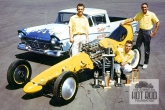
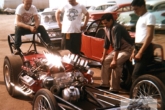
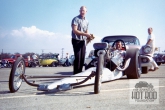
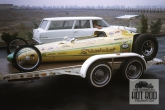
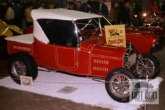

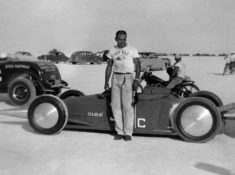 Ak Miller
Ak Miller Harry Hibler
Harry Hibler Wally Parks
Wally Parks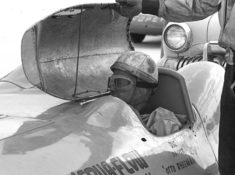 Otto Ryssman
Otto Ryssman